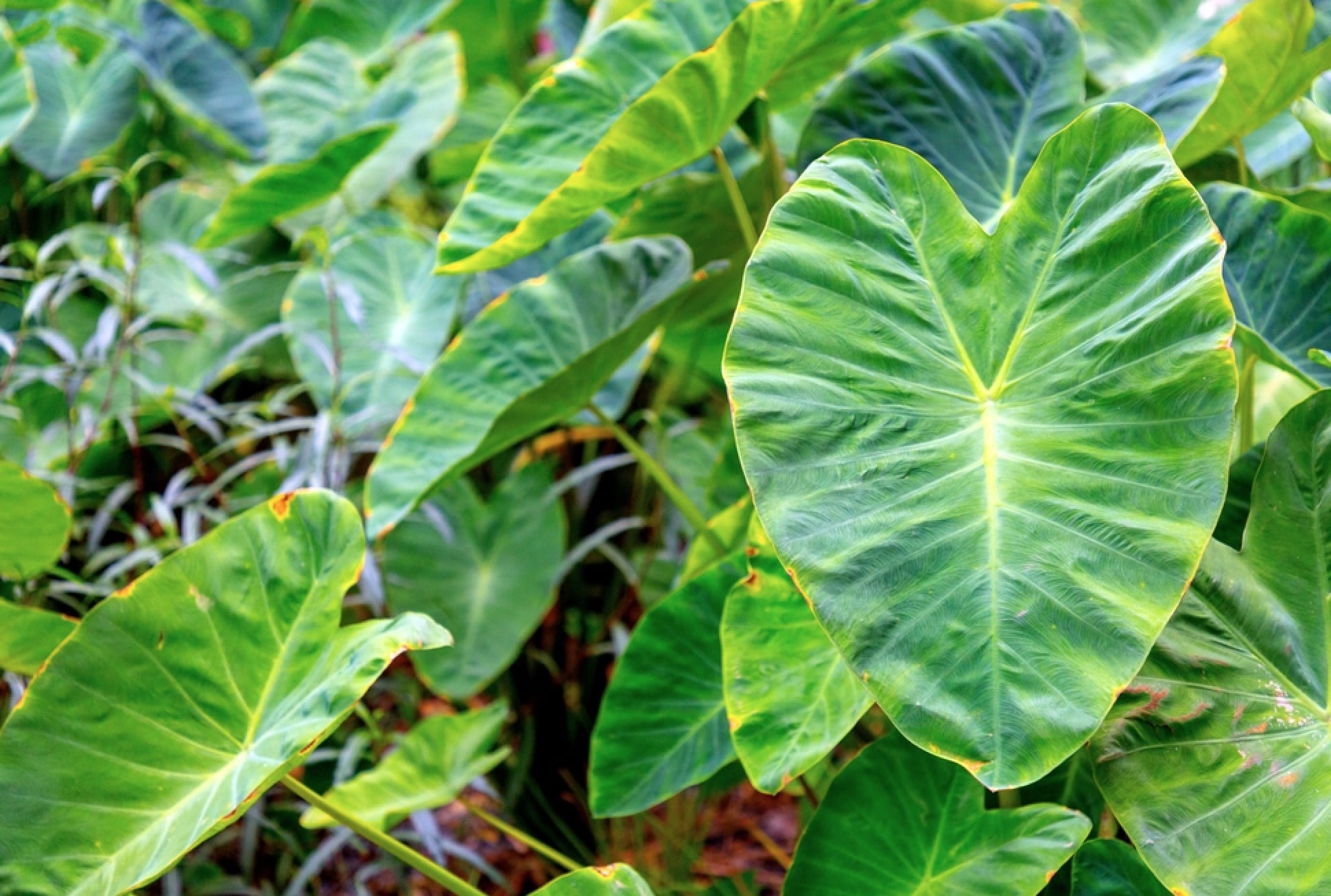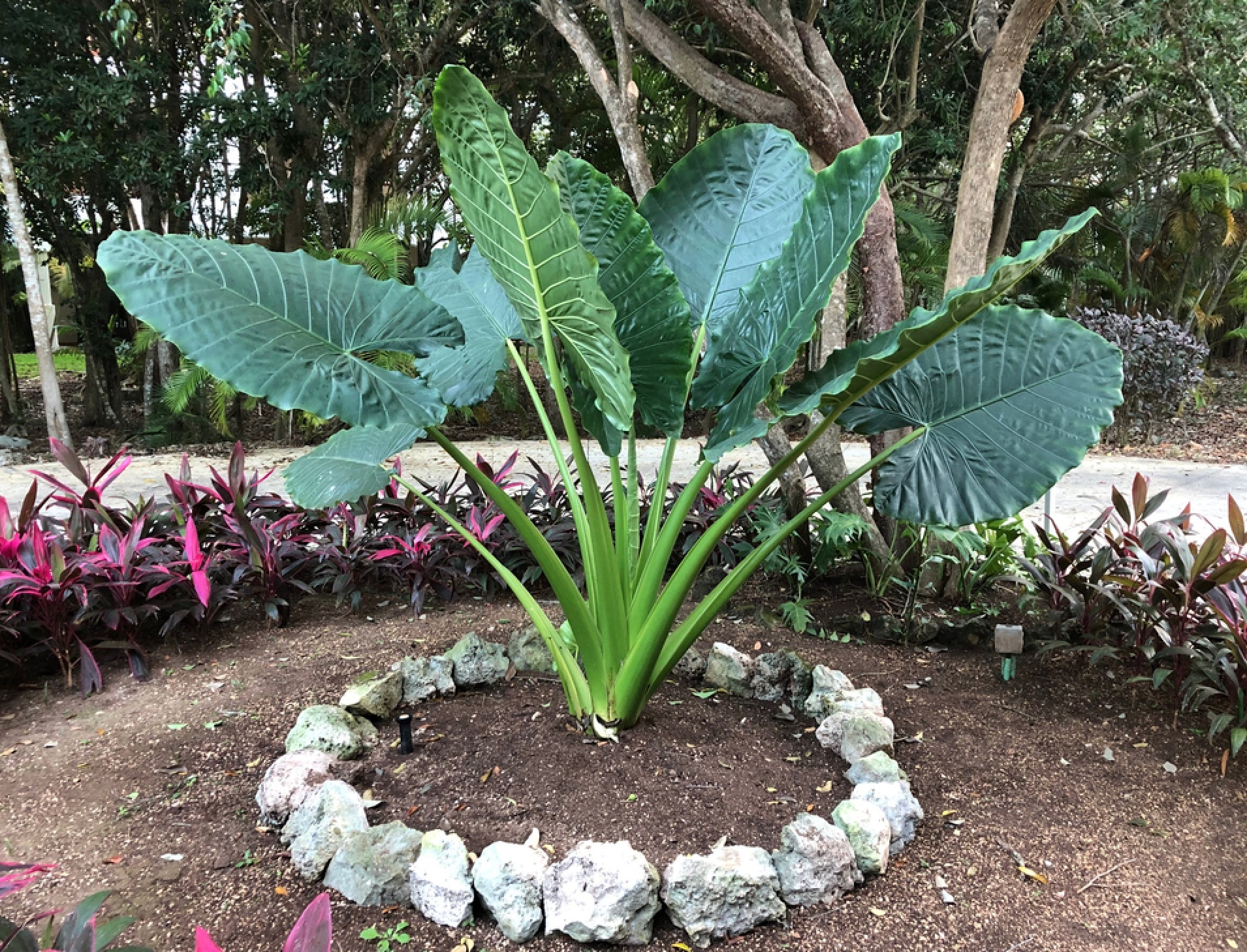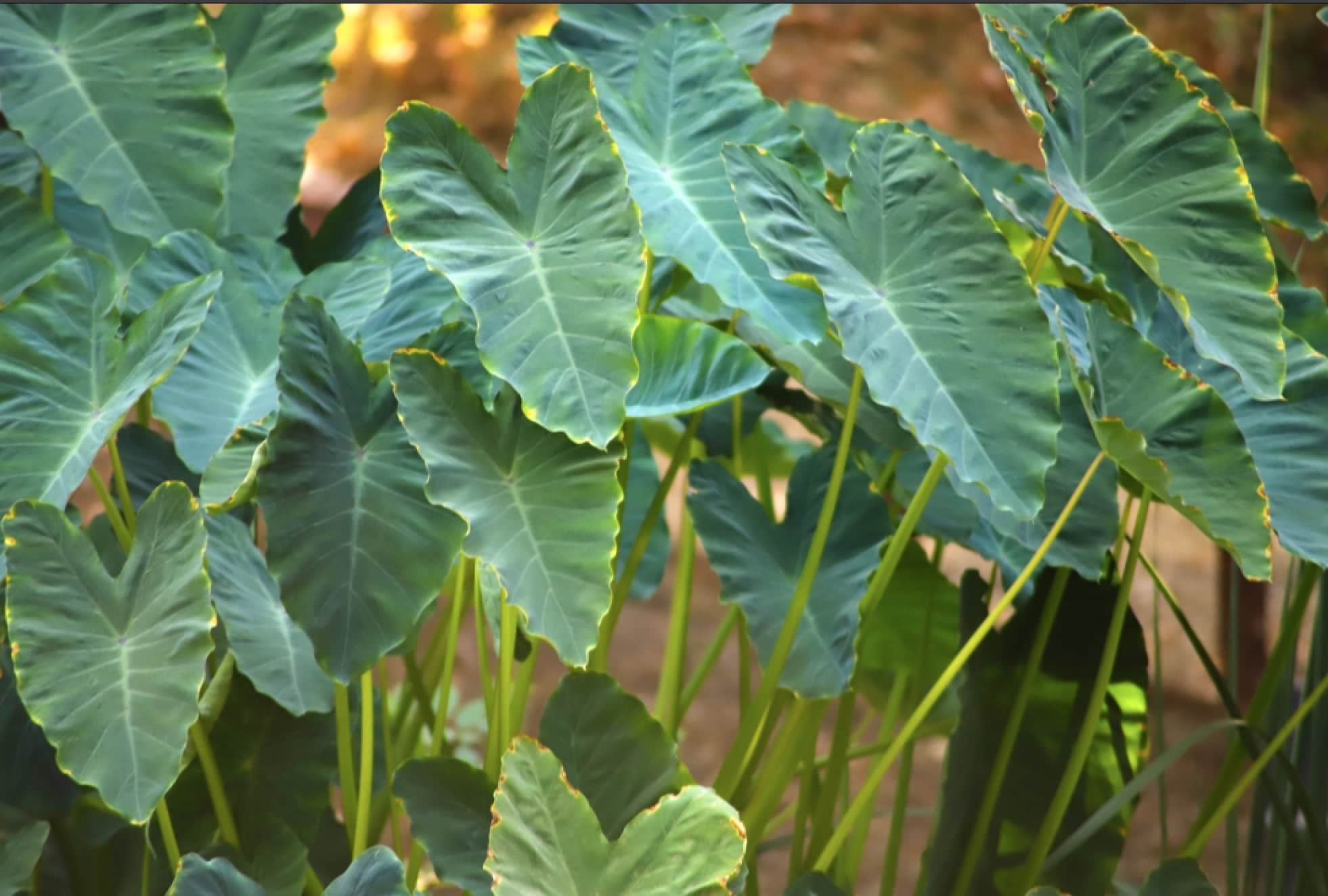| Question | When to Plant Elephant Ear Bulbs? |
|---|---|
| Answer | Spring, after the last frost |
| More Info | Elephant ear bulbs thrive in warm conditions and should be planted when the threat of frost has passed and soil temperatures have warmed to at least 65°F. In cooler climates, this is typically in late spring. In warmer regions, planting can occur earlier. Elephant ears require moist, well-drained soil and partial to full sunlight. They can also be started indoors about 4-6 weeks before the last expected frost and then transplanted outside when conditions are suitable. |
Elephant Ear Bulb Planting: 101
When gardeners embark on planting Elephant Ear bulbs, timing and placement are key factors for successful growth. They should plant the bulbs in spring, after the danger of frost has passed.
Optimal soil temperatures range from 60°F to 85°F for planting.
Elephant Ears flourish in an environment that provides ample sun and partial shade. However, the ‘Black Magic’ variety is an exception, thriving in partial to full shade.
It’s essential to identify a location that gives each bulb at least 3 feet of space to accommodate the growth of large leaves.
Soil preparation involves adding 2 inches of compost to enrich the soil with organic matter, which benefits the plants.
The soil’s pH should be between 6 and 7. If the soil is too acidic, gardeners can amend it with lime to increase the pH or sulfur to decrease it.
Here’s a quick guide on how to plant the bulbs:
- Identify the bulb’s top with concentric circles and place accordingly. If uncertain, plant the bulb on its side.
- Plant the bulbs at a depth of 2 to 3 inches.
- Space the bulbs 18 to 24 inches apart to ensure they have room to grow.
Best Planting Time for Elephant Ear Bulbs
Planting elephant ear bulbs at the correct time is crucial for vibrant growth and lush foliage. It ensures the safety of the bulbs from frost and optimizes conditions for early growth.
Regional Climate Considerations
In USDA hardiness zone 7, for instance, the optimal planting time is when outdoor temperatures consistently range between 60°F to 85°F.
Different zones will require attention to local last frost dates and summer temperature averages.
Gardeners should monitor their regional climate closely and plant accordingly to prevent frost damage and promote robust plant development.
- Zone 5: Late May to early June
- Zone 6: Mid-May
- Zone 7: Early to mid-April
- Zone 8: Late March to early April
- Zone 9-10: February to March
Seasonal Temperature Influence
Elephant ear bulbs thrive when planted in the spring after all danger of frost has passed.
They require warm soil temperatures, ideally above 55°F (13°C), to stimulate growth.
The heat of late spring to early summer is a perfect catalyst for the bulbs to develop strong roots and expansive leaves.
- Ideal soil temperature: Above 55°F
- Planting depth: 4-6 inches
- Spacing: 3 feet apart
Preparing for Planting
Before planting elephant ear bulbs, gardeners must focus on two critical aspects: the soil condition and the health of the bulbs. Proper preparation ensures a robust growth period and optimal plant health.
Soil Preparation
The soil should be rich in organic matter and well-draining to encourage healthy growth.
Gardeners should aim to maintain a soil pH between 6.0 and 7.0, which is slightly acidic to neutral.
- Add approximately 2 inches of compost to enrich the soil.
- Ensure proper drainage to avoid bulb rot.
- If necessary, adjust the soil pH using lime (to increase pH) or sulfur (to decrease pH).
Selecting Quality Bulbs
Selecting high-quality bulbs is crucial for the successful cultivation of elephant ears. When choosing bulbs, gardeners should:
- Look for firm bulbs, avoiding any that are soft or show signs of rot.
- Select bulbs with visible concentric circles at the top end, indicating the growth point.
Planting Process
When planting Elephant Ear bulbs, gardeners must pay close attention to the planting depth and proper spacing, as well as the immediate care which includes watering and climate considerations, to ensure the robust growth of these tropical plants.
Planting Depth and Spacing
- Depth: The bulbs should be planted with the top — identifiable by concentric circles — approximately 1 to 2 inches below the soil surface.
- Spacing:
- For ample growth, space the bulbs 18 to 24 inches apart.
- Depth and spacing are vital to prevent overcrowding and to ensure proper growth.
Watering and Initial Care
- Watering:
- Thoroughly water the bulbs immediately after planting.
- Maintain consistent moisture, especially during dry spells, without over-saturating as this can lead to rot.
- Climate Conditions:
- Place the pots in an area with bright, indirect sunlight and consistent warm temperatures if starting indoors.
- Elephant Ears require warm conditions, so outdoor planting should commence when temperatures are consistently above 55°F.
Post-Planting Care
After planting elephant ear bulbs, gardeners should focus on proper fertilization and monitoring the growth to ensure healthy and vibrant elephant ears.
Fertilization
Upon planting, elephant ear plants benefit from an initial application of a balanced, slow-release fertilizer to kickstart growth.
Gardeners should apply a 10-10-10 (nitrogen-phosphate-potassium) formula, following package directions for dosing.
Throughout the growing season, a monthly application will help sustain robust foliage.
Monitoring Growth
Regularly inspect elephant ear plants for signs of growth and health, which usually begin as small shoots emerging from the soil.
As the plants develop, they require consistently moist soil; however, one should avoid waterlogging, as it can lead to bulb rot.
Additionally, it is important to check for pests such as spider mites or aphids, which are attracted to elephant ears’ large leaves.
A simple inspection every few days allows for early detection and treatment of any potential issues.
Frequently Asked Questions
This section addresses common inquiries gardeners may have about planting and caring for elephant ear bulbs to ensure robust growth and vitality.
What is the best month to plant elephant ear bulbs?
Elephant ear bulbs thrive in warm temperatures. They should be planted in the spring, after the last frost has passed and when soil temperatures remain above 55°F (13°C). Ideal planting time varies by region, often ranging from late March to early June.
How deep should elephant ear bulbs be planted?
For optimal growth, elephant ear bulbs should be planted about 2 to 4 inches deep in the soil with the end that has concentric circles facing upwards. If unsure which end is up, they can be planted on their side.
Should you soak elephant ear bulbs before planting?
Soaking elephant ear bulbs before planting is not mandatory, but doing so for a few hours in lukewarm water can help accelerate the sprouting process, especially for bulbs that seem dry or have been stored for an extended period.
Do elephant ear bulbs need to be dug up for winter storage?
In areas where winter temperatures fall below freezing, elephant ear bulbs should be dug up and stored in a cool, dry, frost-free location during winter to protect them from freezing and rotting.
How can I encourage elephant ear bulbs to multiply?
To promote multiplication, maintain consistently moist soil, provide regular feedings with a balanced fertilizer during the growing season, and ensure that the plants have plenty of space as overcrowding can impede their ability to multiply.
What are the best practices for planting elephant ear bulbs in containers?
When planting in containers, choose a large pot with drainage holes and fill it with a well-draining, rich soil mix.
Bulbs should be planted at the same depth as in the ground, and the container should be kept in a warm, sunny location.
Keep the soil consistently moist but not waterlogged.
Last update on 2025-06-06 / Affiliate links / Images from Amazon Product Advertising API





